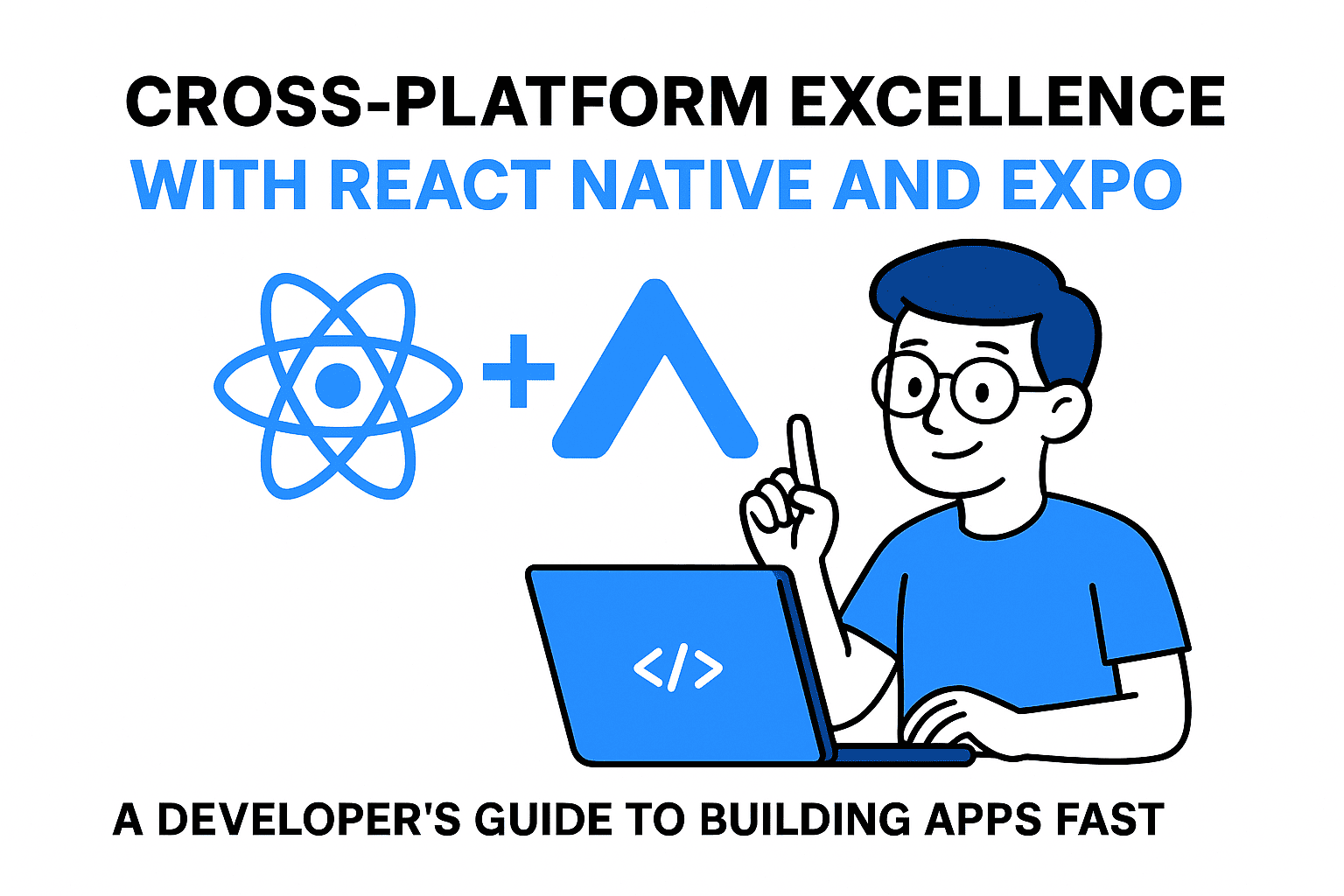In the world of mobile app development, building a single app that runs seamlessly on both iOS and Android can feel like a mythical goal. But with React Native and the Expo framework, this dream is now a reality—without sacrificing developer efficiency or code quality. In this article, we’ll walk through how to harness the power of React Native with Expo, use it for cross-platform magic, and explore stack integrations to build full-featured apps.
The Developer Story: Alex’s Journey with Expo and React Native
Let’s meet Alex, a full-stack developer who wanted to build an app called GoalTrack, a tool for users to log daily goals and track progress. Alex had no prior mobile development experience but was determined to launch the app in a few months.
Why React Native and Expo?
Alex’s first challenge was choosing the right tech stack. He heard about React Native and decided to try it because:
- It uses JavaScript/TypeScript, his favorite language.
- He could reuse code for both iOS and Android.
- It had a vibrant community and extensive documentation.
When he considered Expo, the decision was easy. Expo’s managed workflow allowed him to:
- Start building instantly with
npx create-expo-app. - Use built-in tools for debugging, testing, and deployment.
- Avoid the hassle of configuring native modules.
Alex quickly built a prototype with features like goal creation, progress tracking, and a simple UI. He even tested it on his phone using the Expo Go app—no setup required!
How Easy Is It to Start with Expo?
Expo’s simplicity is its greatest strength. Here’s how Alex got started:
Step 1: Install Expo CLI
npm install -g expo-cli
Step 2: Create a New Project
expo init goaltrack
Alex chose the “blank (TypeScript)” template for better type safety.
Step 3: Run the App
cd goaltrack
npx expo start
The Expo CLI launched a development server, and Alex could test the app on his phone via QR code.
Key Features of Expo
- Built-in APIs: Access device cameras, geolocation, and more without writing native code.
- Dev Menu: Tools for debugging, inspecting UI, and simulating offline modes.
- Expo Go App: A free mobile app to test your project on real devices.
Why it’s great for beginners: Expo abstracts the complexity of native development, letting you focus on building features.
Stack Options for Building Cross-Platform Apps
Once Alex had his prototype, he needed a backend. He explored three stack options—each with its own pros and use cases.
1. React Native + Supabase: Real-Time Database & Auth
Supabase is an open-source alternative to Firebase, offering:
- Real-time databases (PostgreSQL).
- User authentication with OAuth and email.
- REST API endpoints for custom logic.
Alex used Supabase’s SDK to let users log in and sync their goals:
import { createClient } from '@supabase/supabase-js';
const supabase = createClient(
'https://your-super-secret-url.supabase.co',
'your-2345678901234567890123456789012345'
);
// Fetch goals
const { data, error } = await supabase.from('goals').select('*');
Pros: Open source, customizable. Cons: Requires some backend knowledge.
2. Firebase: Full-Featured Backend-as-a-Service
Firebase is ideal for developers who want pre-built tools like:
- Authentication (Google, email, etc.).
- Cloud Firestore for real-time data.
- Storage and Analytics.
Alex integrated Firebase Auth to secure his app:
import { getAuth, onAuthStateChanged } from 'firebase/auth';
const auth = getAuth();
onAuthStateChanged(auth, (user) => {
if (user) {
// User is signed in
}
});
Pros: Easy to get started, scalable. Cons: Paid plans for heavy usage.
3. Custom Backend with Laravel/Spring Boot
For developers needing full control, a custom backend using Laravel (PHP) or Spring Boot (Java) is powerful. Alex connected his app to a Laravel API:
// Fetch goals from Laravel backend
fetch('https://api.yourapp.com/api/goals')
.then(res => res.json())
.then(data => console.log(data));
Pros: Full customization, perfect for complex logic. Cons: Requires backend development skills.
Tips for Beginners (and Pros)
- Start with Expo: Use the managed workflow to prototype quickly.
- Migrate to Bare Workflow if Needed: Switch to a bare React Native project when you need access to native modules or specific APIs.
- Leverage Expo’s Community: Tutorials, plugins, and templates are a goldmine.
- Choose Your Stack Wisely:
- Use Supabase/Firebase for fast prototyping with minimal backend work.
- Go with Laravel/Spring Boot if you need full control or complex business logic.
Conclusion: Cross-Platform Excellence Made Easy
React Native and Expo have transformed mobile development by making it possible to build high-quality apps with a fraction of the effort. Whether you’re a rookie like Alex or a seasoned dev, the combination offers flexibility and speed.
For your next project, experiment with Expo’s tools, pair it with a stack like Supabase or Firebase, and see how far you can go. With the right tools, cross-platform excellence isn’t just a dream—it’s your new reality.
Next Steps for You:
- Try creating a simple app with Expo.
- Explore Supabase or Firebase to add real-time features.
- Challenge yourself by integrating a custom backend with Laravel/Spring Boot.
Happy coding, and may your cross-platform apps shine as bright as your creativity! 🚀
🚀 Let’s build something amazing! If you have a project in mind or need help with your next design system, feel free to reach out.
📧 Email: safi.abdulkader@gmail.com | 💻 LinkedIn: @abdulkader-safi | 📱 Instagram: @abdulkader.safi | 🏢 DSRPT
Drop me a line, I’m always happy to collaborate! 🚀


